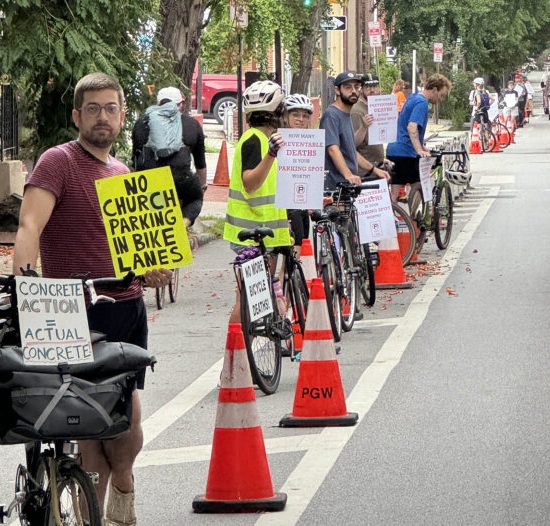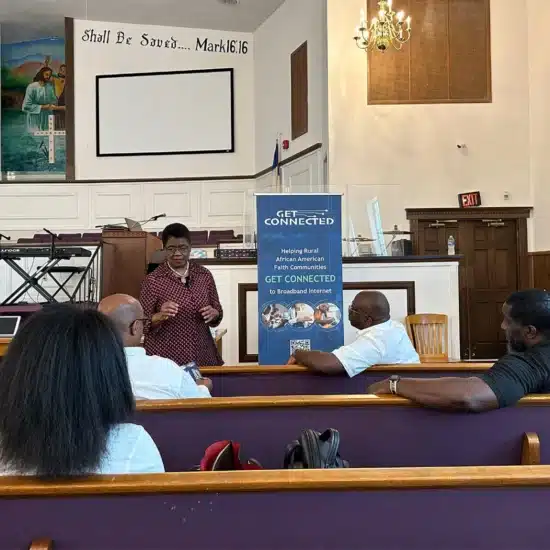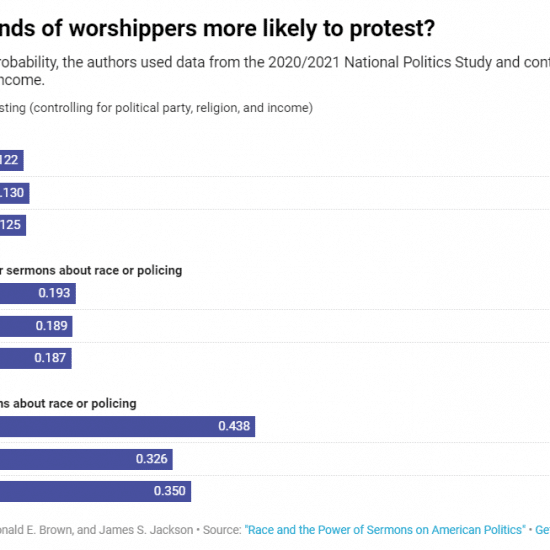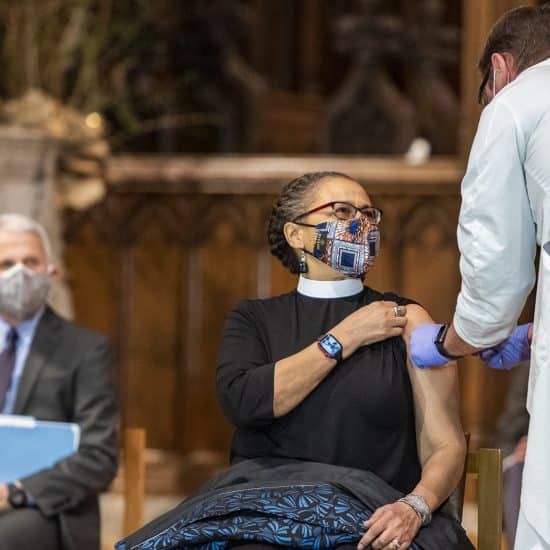Just how many Christians are Flocking to Facebook?
It’s not an idle question, to judge from the number of people asking it on the wildly popular social networking site. “We Can Find 10,000,000 Christians on Facebook” is the name of one of the larger groups — although, with 1,045,418 members, the group still has some work ahead of it.

Social networking sites like Facebook and Twitter are rapidly changing the way Christians communicate with each other, and how ministers keep in touch with their flock.
|
For churches eager to connect with those millions of Christians — many of them church members — social networking on the Web has become unavoidable.
“It’s where the people are, including the church people,” says Cheryl Smith, a social media consultant in Lynchburg, Va.
Daniel Johnson, associate pastor for students at Kirkwood Baptist Church in St. Louis, agrees. He joined Facebook when he realized it was the best way to contact the members of his youth group. “Many told me they hardly check e-mail anymore, but they always check Facebook,” he said.
While the youth group has a Web site, Johnson decided instead of spending time and effort to get people to visit the site, he would meet them where they already were — on Facebook.
Facebook now counts more than 100 million members and by one estimate is adding 450,000 every day. And while Facebook may be the most popular social networking site, it’s far from alone. MySpace, Twitter, LinkedIn, YouTube, Flickr, Youmeo, Plaxo and innumerable others offer opportunities for “ambient awareness.”
Web sites have become well-established features of many churches’ communications strategy. But that Internet presence, with its ability to provide instant and comprehensive information, is distinctly different from the social networking phenomenon — and some observers would say increasingly less relevant.
“Traditional Internet marketing is about pushing information to the end user,” said Smith, a member of Rivermont Avenue Baptist Church in Lynchburg, Va. “Social networking is really about a conversation, about engaging people.”
East Texas Pastor Jay Abernathy of First Baptist Church in Palestine, Texas, has found Facebook accomplishes both goals. “In short, it’s what we hope a church Web site can do, but Facebook allows us to actively push content to our ‘friends’ and group members, unlike a Web site that is passive.”
Abernathy has found that nearly half of the teenagers and adults at his church are on Facebook. His church uses the networking site to invite people to church events and ministry group meetings, but he also takes the opportunity to send personal messages and chat for one-on-one discipleship.
“Facebook allows me to communicate with folks at a level and on a timeframe that multiplies my connections with people, whether they are members or prospects,” he said.
“Communications strategists used to say, ‘We have a message we want people to get,’” said Thom Stanton, Web services administrator for the Virginia Baptist Mission Board. “Now they say, ‘We have a relationship we want to develop.’”
A communications network that values human relations would seem a natural partner for churches and their essential message of entering into relationship with God through Jesus Christ. But for many congregations, social networking remains elusive and perplexing. Frequently, churches with a Facebook presence use it as little more than a supplementary Web site.
“The old Web site strategy that uses it as a billboard — static and non-dynamic — is pretty useless,” said Chuck Warnock, pastor of Chatham (Va.) Baptist Church. Web sites are helpful only for “posting worship service times and the church’s location,” he said.
“The word ‘community’ is overworked when you’re talking about the Internet, but (social networking utilities) do create a sense of community,” he said.
One way churches are developing a community on Facebook is through photos. While church members may not answer traditional requests for feedback following an event, Johnson and Pastor Charlie Brown of The Crossing Baptist Church in Mesquite, Texas, have found that event photos work well as a conversation starter.
Photos can be a jumping-off point for sharing memories and stories, Johnson said. It can be a way to promote community and reinforce what occurred at the activity or event.
“Using Facebook — or something similar — for ministry is something that I hope is being taught in seminaries,” said Tyler Tankersley, director of youth and young adults at First Baptist Church in Cape Girardeau, Mo. “I believe that Facebook is a new wineskin, and we must adjust and adapt the way that we choose to reach people.”
Tankersley doesn’t believe social networking sites will replace face-to-face interaction, but believes the church needs to be actively engaging people where they are.
Church special events are promoted with Facebook’s events feature. They also provide an up-to-date list of who is teaching Sunday school. Tankersley also uses the site to remind people to pray for the requests mentioned on Sundays.
“In our churches, we are so fragmented because of schedules that when you can connect with someone, it’s valuable,” said Smith. “That’s what makes social networking so appealing.”
Oddly, it’s out of fragments that social networks connect. The most common way to communicate through Twitter is by broadcasting what technology writer Clive Thompson calls “haiku-length updates” — short (140 characters), frequent and spontaneous reports in response to the question, “What are you doing?”
But Thompson wrote in a New York Times Magazine piece last fall: “This is the paradox of ambient awareness. Each little update — each individual bit of social information — is insignificant on its own, even supremely mundane. But taken together, over time, the little snippets coalesce into a surprisingly sophisticated portrait of your friends’ and family members’ lives, like thousands of dots making a pointillist painting…. The ambient information becomes like a type of E.S.P.…, an invisible dimension floating over everyday life.”
That ability to connect is “unprecedented,” Smith said, and offers churches opportunities to engage members and nonmembers in deeply felt ways.
Johnson started a Twitter account for the Kirkwood youth ministry to allow the youth to give short reports while events are happening. Parents and church members will be able to receive updates during mission trips, for example. “We can capture it as it happens,” Johnson said.
Since youth rarely share details of a trip with their parents, the Twitter site will allow followers a chance to receive an indepth report in real time. And since Twitter archives all the “tweets,” a person can view the updates at their convenience without missing anything.
Through tweets or Facebook status updates, “I’m able to see someone’s mood, hear what they’re up to and get to see behind the curtain,” wrote Greg Atkinson, who lives in suburban Dallas and blogs on church and technology issues.
“For senior pastors, this is especially beneficial for breaking down the wall between clergy and laity,” said Atkinson. “I think it’s healthy for one of your congregation members to see you’re ‘cutting the grass,’ ‘raking leaves,’ ‘going to a football game’ with your son, ‘watching a movie’ with your spouse. … All these status updates can seem silly but are a sneak peak into your everyday life. It’s like running into your grade school teacher in the grocery store when you were a kid and being surprised to see them out of the classroom.”
Chris Forbes, founder of Ministry Marketing Coach and author of the e-book, Facebook for Pastors, maintains that authenticity is essential to communicating through social media.
“One of the quickest ways to lose credibility is to join the site, use all your ‘promotional speak’ and spam out a bunch of invitations to your events and groups,” said Forbes. “Too much promotion and not enough networking will get people to drop you from their friends list.”
What’s more, he added, vulnerability is key.
“Pastors are used to preaching. They are allowed the unique privilege and responsibility of preparing a message from God’s word each week and communicating that message uninterrupted in a one-way monologue. Those days are over,” Forbes said. “Preaching from the platform of a church may not have changed much, but there is an increasing demand from church members to have real and meaningful conversations with their ministry leaders beyond the Sunday morning service times and outside the walls of the church.”
Jennifer Harris is news writer for Word&Way.
Robert Dilday is associate editor of Virginia Religious Herald.






